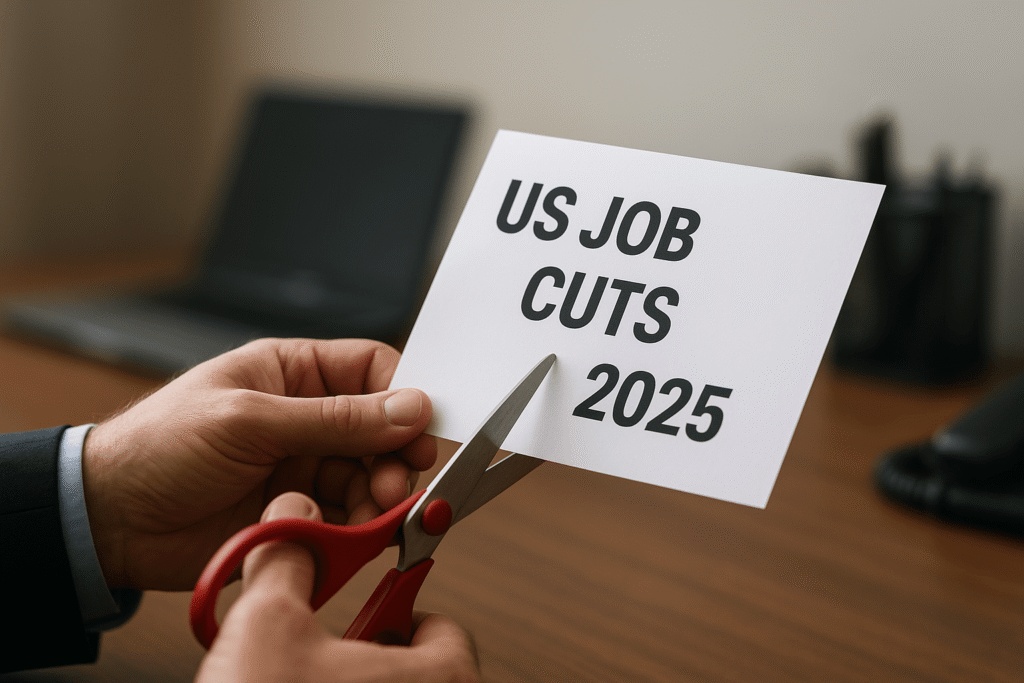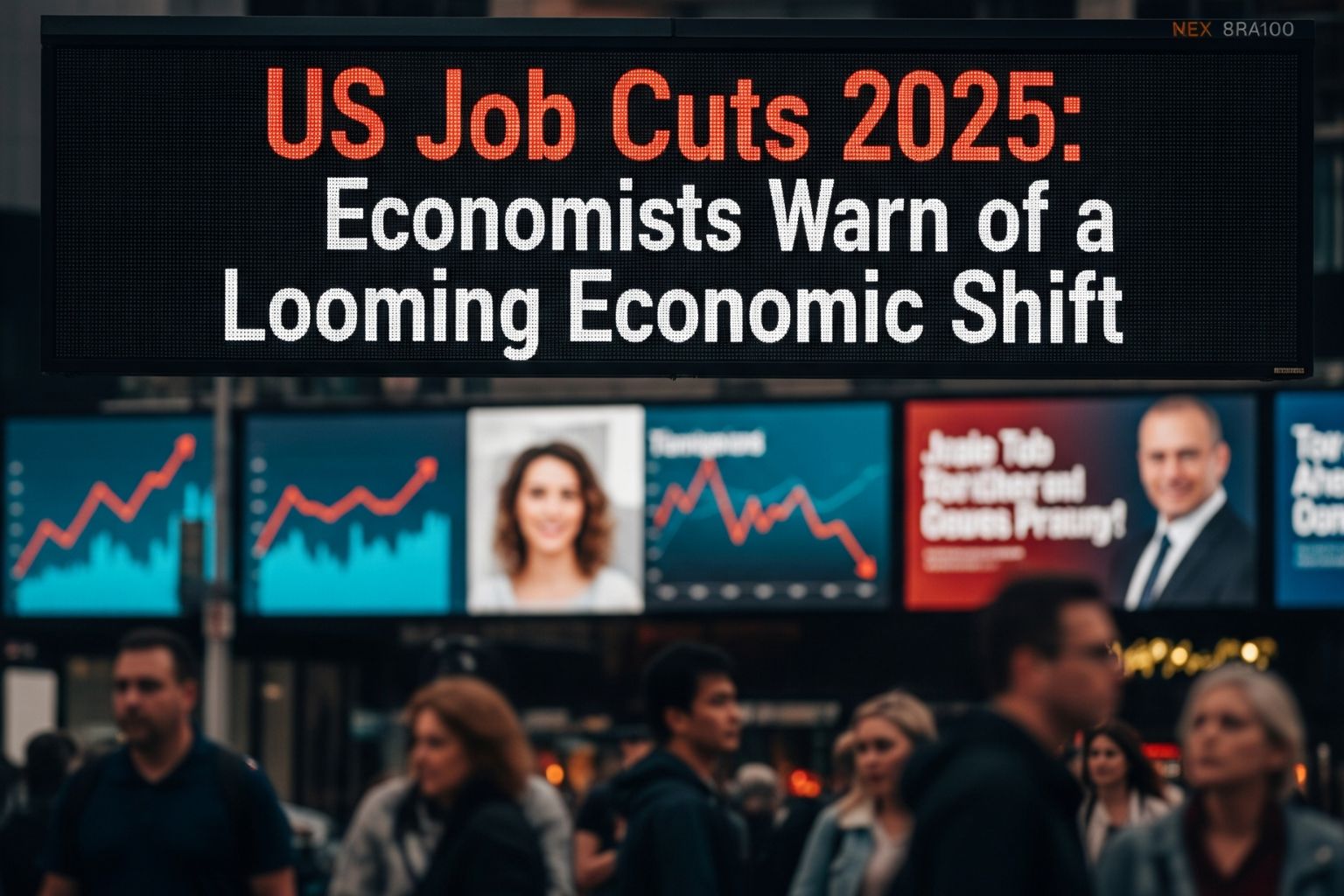The US job cuts 2025 trend is accelerating, and economists are sounding the alarm. New data shows that more than half of American industries have already begun reducing headcounts, a pattern that has historically preceded recessions. Payroll growth, once a steady indicator of economic strength, has almost stalled since May, prompting urgent discussions about the nation’s financial health.

Mark Zandi, chief economist at Moody’s Analytics, thinks the U.S. economy is not officially in a recession yet, but the signs are stacking up. “When over 53% of industries are cutting jobs and payroll growth is barely moving, history tells us we are at a critical turning point,” Zandi stated.
US Layoffs Data 2025 Paints a Grim Picture
The latest US layoffs data 2025 reveals a sharp slowdown in job creation. Only 73,000 jobs were added to payrolls in July, well below the nearly 100,000 positions that experts had predicted. The data from prior months was significantly revised downward, which is even more worrisome. June saw a sharp decline in job growth from 147,000 to 14,000, while May saw a decline from 144,000 to barely 19,000 jobs.
This puts the average monthly gain over the last three months at a meager 35,000 jobs a dangerously low figure for an economy of this size. Economists warn that if upcoming revisions show a net job loss, it could confirm that the downturn has already begun.
In the past, when more than half of the 400 industries the payroll survey covered reduced employment, the U.S.was already in a recession. Right now, healthcare stands as the only major sector still adding significant jobs, while manufacturing, retail, and technology lead the declines.
US Unemployment Trends 2025 and the Recession Warning Signs
While the unemployment rate remains between 4% and 4.2% relatively stable for over a year experts say it’s no longer a reliable early indicator of trouble. According to Zandi, recent declines in the number of foreign-born workers have kept the labor force steady, masking deeper weaknesses.
The US unemployment trends 2025 suggest that beneath the surface, the labor market is cooling. Average workweeks are now shorter than they were in 2019, pointing to reduced labor demand. This aligns with the US recession warning signs many economists have been tracking slower hiring, falling job openings, and wage growth losing momentum.
The Atlanta Federal Reserve’s GDP tracker still projects growth, with third-quarter estimates rising from 2.1% to 2.5%. But that’s down from the second quarter’s 3% pace, showing the economy is already losing steam.
US Payroll Report 2025 Signals Weakness Across Sectors
The most recent US payroll report 2025 has heightened concerns. Private sector hiring over the last three months averaged only 52,000 jobs, with growth almost entirely concentrated in healthcare and education. Other industries, from manufacturing to finance, are either stagnant or shrinking.
Wall Street analysts are split on the causes. Some attribute the slowdown to weak labor demand, while others point to reduced supply due to immigration restrictions under President Donald Trump. Bank of America believes the downturn is tied to supply-side constraints, describing it as an “inflationary recession.” Meanwhile, UBS warns that sluggish demand is the real issue, with the labor market showing signs of “standstill momentum.”
US Labor Market Slowdown Could Lead to Layoffs Surge
The US labor market slowdown is already forcing companies to rethink hiring plans. JPMorgan economists warn that such a steep drop in labor demand is a classic precursor to layoffs. “When hiring freezes combine with slowing growth, history tells us layoffs follow,” they said.
Right now, the US industries cutting jobs 2025 list is growing from tech and retail to construction and logistics. If demand fails to rebound, the wave of job cuts could expand beyond current projections, putting even more pressure on household spending and overall economic activity.
A Critical Moment for the U.S. Economy
For now, there’s still time to avoid a full-blown recession. Policymakers could ease some of the economic pressures but most analysts agree such changes are unlikely in the short term. Without intervention, the US job cuts 2025 trend could deepen, triggering broader declines in consumer confidence and business investment.
Zandi’s warning is clear: “A recession is defined by a sustained drop in jobs lasting several months. We’re not there yet, but the trajectory is worrying. If these cuts continue, the economy will feel the impact sooner rather than later.”
The message from the latest US layoffs data 2025 is simple the labor market is cooling, industries are scaling back, and the window to act is closing. Whether or not the U.S. enters a recession in 2025 may depend on how quickly policymakers and businesses respond to the warning signs already flashing red.







